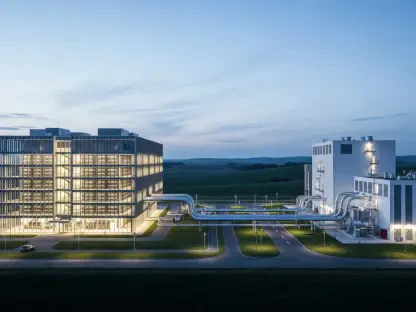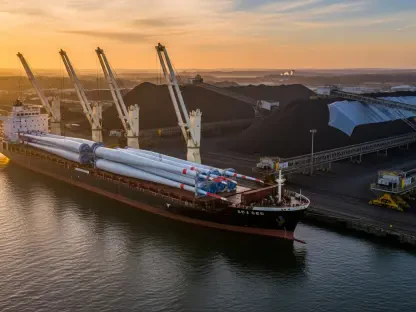In a world grappling with the urgent need to curb greenhouse gas emissions, the cement industry stands out as a significant contributor to global pollution, responsible for roughly 7% of worldwide carbon dioxide output due to its energy-intensive processes and chemical reactions. Amid this environmental challenge, a Stockholm-based startup founded in 2019 has emerged as a beacon of innovation, recognized among the top climate tech companies to watch this year. By rethinking the traditional methods of cement production, this company is paving the way for a more sustainable future, addressing both the high energy demands and the substantial emissions tied to creating one of the world’s most widely used building materials. With a focus on reducing environmental impact through novel approaches, the startup is not only challenging industry norms but also inspiring a shift toward a circular economy in construction.
Innovating Cement Production for a Greener Future
Redefining Manufacturing Processes
The conventional production of Portland cement, a staple in construction, involves heating limestone to over 1,450°C, a process that consumes vast amounts of energy and releases significant carbon dioxide. In contrast, this Swedish innovator has developed a material that requires heating to only about 1,200°C, markedly lowering energy use. Beyond temperature reduction, the company has also shifted away from fossil fuels, employing alternative energy sources such as plasma, hydrogen, and electricity to power its kilns. This strategic move slashes emissions by an impressive 80% to 95% compared to traditional methods, offering a compelling solution to one of the industry’s most pressing issues. By integrating these cutting-edge techniques, the startup demonstrates a viable path to decarbonizing cement production while maintaining the material’s essential properties for construction applications, setting a new benchmark for sustainability in a historically high-emitting sector.
Leveraging Waste for Sustainable Materials
Another cornerstone of this company’s approach is its commitment to a circular economy by incorporating industrial by-products into its cement formulation. Materials such as mine tailings and slag from steel production replace a significant portion of newly mined limestone, reducing both resource extraction and the carbon dioxide released during processing. This innovative use of waste not only minimizes environmental impact but also addresses the challenge of managing industrial residues, turning potential pollutants into valuable resources. The resulting cement has shown promising characteristics, including high compressive strength and low heat generation when mixed with water, making it suitable for a wide range of construction needs. Through small-scale kiln operations producing up to 12 tons per day, the company has validated the practicality of its methods, proving that sustainable alternatives can meet industry standards while significantly cutting emissions and resource dependency.
Overcoming Barriers and Scaling Impact
Navigating Market Challenges
Despite the groundbreaking potential of this sustainable cement, adoption faces hurdles due to its higher cost compared to conventional options, which could deter widespread use without supportive policies or a customer base willing to invest in eco-friendly materials. The conservative nature of the cement industry further complicates matters, as many stakeholders remain hesitant to embrace alternatives to Portland cement, prioritizing familiarity over innovation. However, mechanisms like the European Union’s pollution pricing system could help balance the economic scales by penalizing high emitters, potentially making greener options more competitive. Additionally, the company asserts that its product offers a more cost-effective solution than carbon capture and sequestration, a rival emissions reduction strategy. Building acceptance in a resistant market remains a critical task, requiring persistent efforts to demonstrate long-term value and reliability to builders and industrial clients.
Planning for Expansion and Industry Influence
Looking ahead, the company is taking decisive steps to amplify its impact by planning a full-scale plant in Northern Europe with a targeted annual capacity of 500,000 metric tons by 2028. This ambitious project, currently in the fundraising phase, marks a significant leap from small-scale trials to industrial-scale production, promising to reshape cement manufacturing on a broader level. Strategic partnerships with players in the construction and mining sectors reflect early market traction, while participation in renowned programs like the Breakthrough Energy Fellows and the Norrsken accelerator lends further credibility to its mission. These alliances and endorsements highlight the startup’s potential to influence industry practices, pushing for wider adoption of sustainable materials. As efforts to scale operations progress, the focus remains on overcoming economic and cultural barriers, ensuring that innovative solutions can transform a critical sector and contribute meaningfully to global emissions reduction goals.









